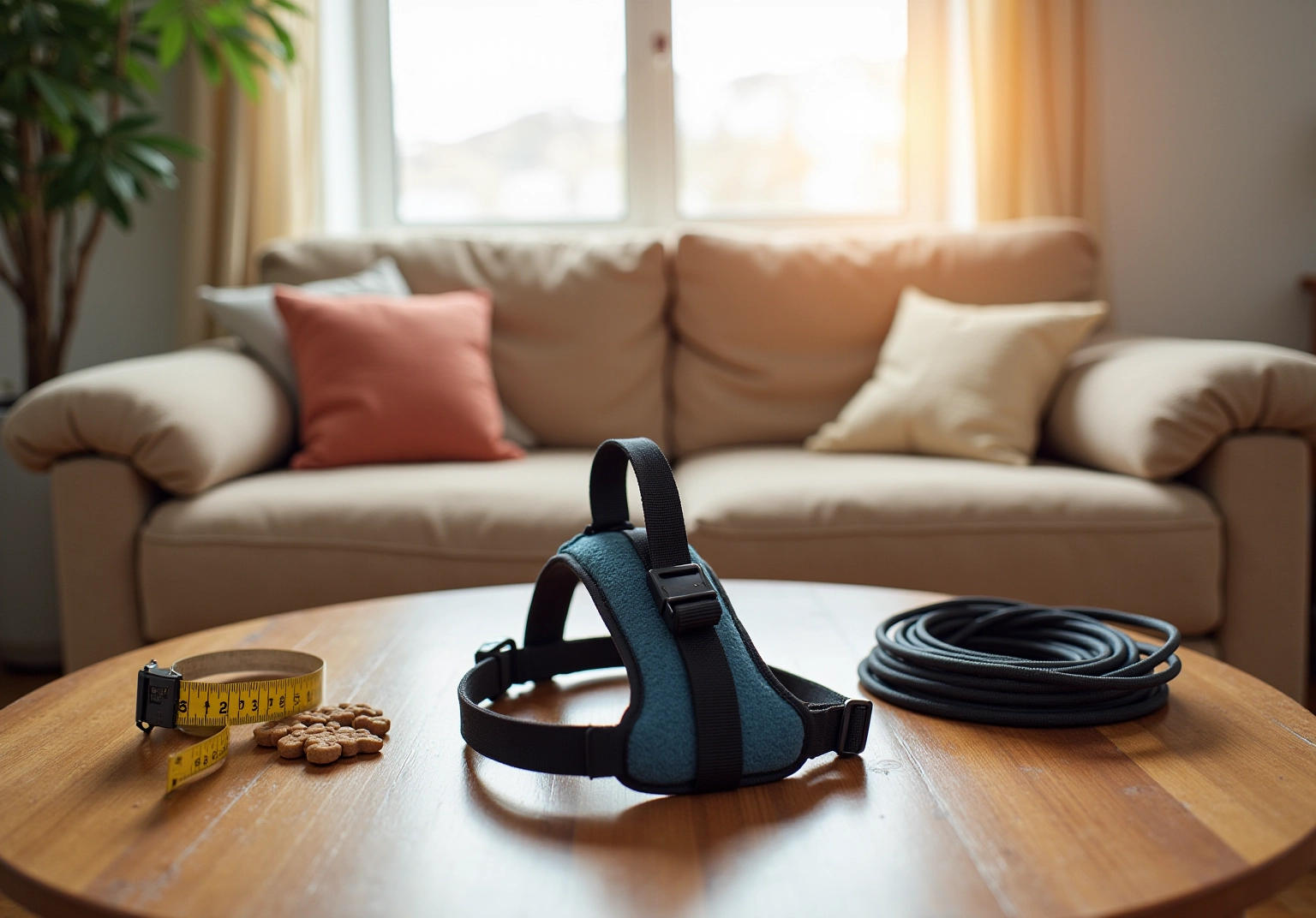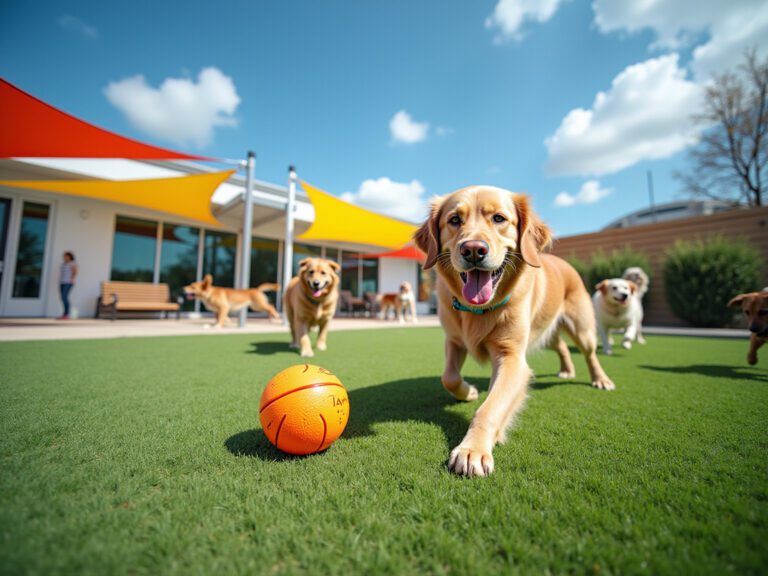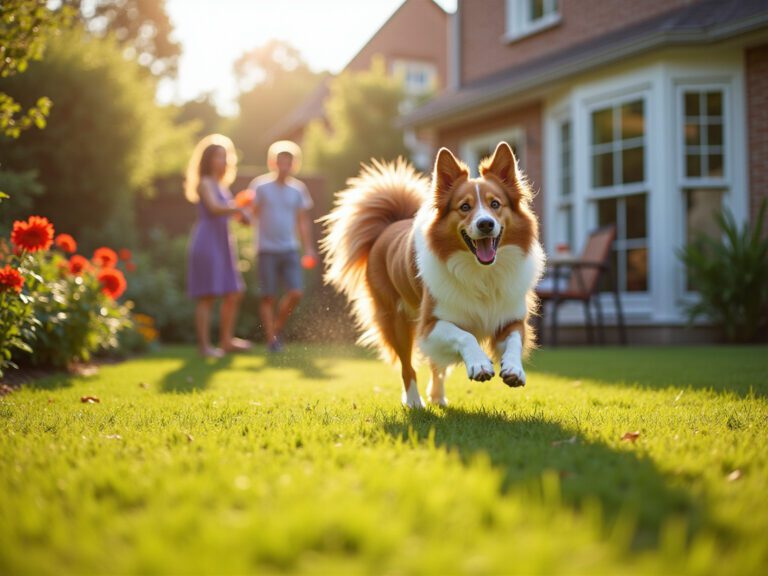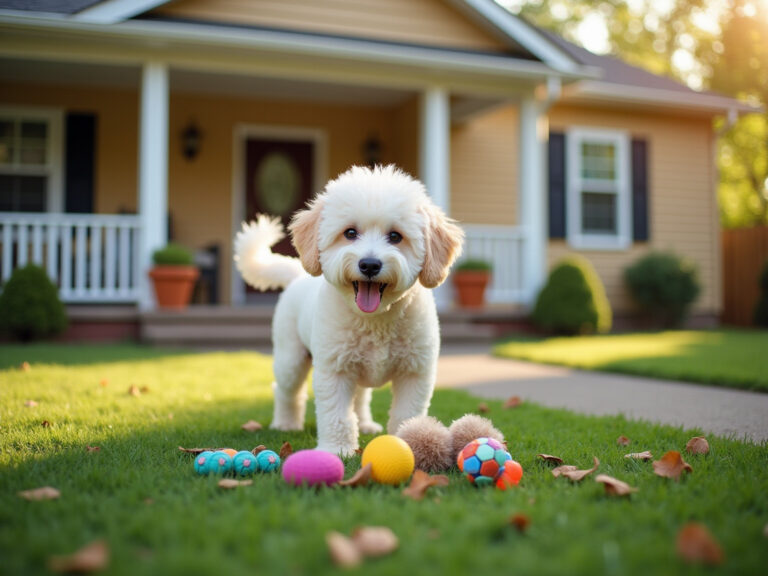Choosing the Best Dog Harness for Pulling: Key Comparisons
Overview
This article lovingly explores how to choose the best dog harness for pulling, highlighting the importance of selecting a harness that ensures comfort, safety, and control for both your furry family member and yourself. Understanding the concerns of pet owners, it offers a comparative analysis of various harness types and brands, focusing on key features such as:
- Fit
- Attachment type
- Material durability
These elements are essential for effectively managing pulling behavior and enhancing the overall walking experience, creating a nurturing environment for your pet. By considering these factors, you can foster a deeper bond with your dog and enjoy your walks together.
Introduction
Choosing the right harness for your furry family member who pulls can truly enhance the walking experience for both you and your beloved pet. With a multitude of options available, it’s important to understand the unique features and benefits of various harness types.
What challenges might you face when trying to select the best harness that balances comfort, control, and safety for your canine companion? By exploring the key differences among leading brands and their specific designs, you can navigate this important choice with confidence, ensuring a nurturing environment for your pet.
Understanding Dog Harnesses for Pulling
When it comes to ensuring the comfort and safety of your furry family members, choosing the right gear is crucial. A dog harness for pulling not only provides enhanced control over your dog’s movement but also greatly minimizes strain on their delicate neck and throat. Unlike traditional collars, which can lead to injuries when a dog pulls, body straps distribute pressure evenly across the dog’s chest and back. This thoughtful design not only enhances safety but also encourages better walking behavior, creating a more enjoyable experience for both you and your pet.
There are various types of restraints available, including:
- front-clip
- back-clip
- dual-clip models
Each is tailored to meet specific needs. For example, front-clip restraints effectively redirect your canine’s forward motion, making it more challenging for them to pull. On the other hand, back-clip restraints are perfect for dogs that don’t exhibit excessive pulling. Understanding these differences is essential for pet owners who want to choose the most suitable equipment, such as a dog harness for pulling, that meets their dog’s unique requirements.
Veterinarians frequently recommend using these restraints, emphasizing their importance in preventing injuries and enhancing a pleasant walking experience. By selecting the right gear, you not only ensure your dog’s safety but also foster a nurturing environment where both of you can enjoy your time together. So, take a moment to explore the options available and make an informed choice that will benefit your beloved pet.
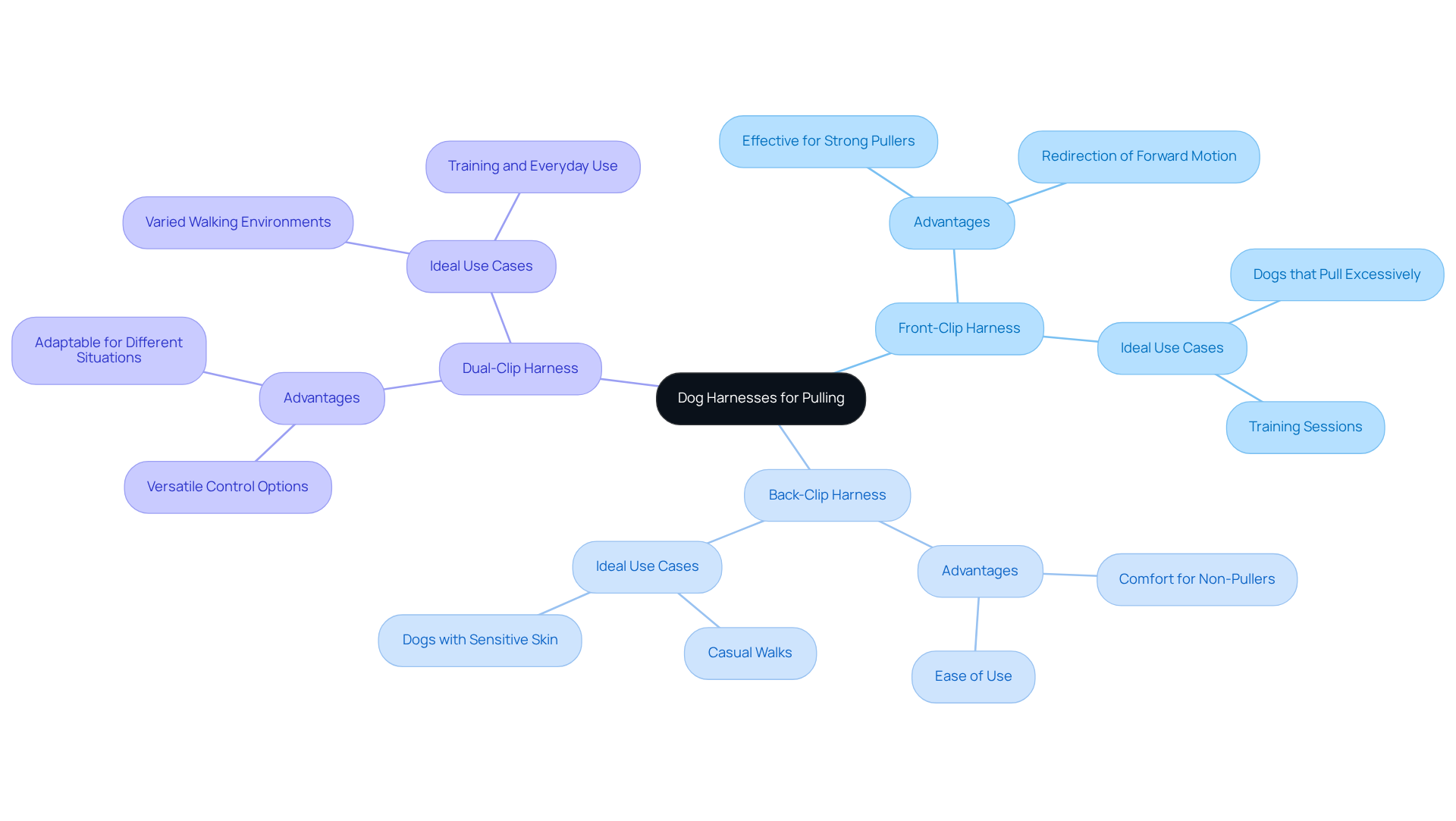
Comparative Analysis of Leading Dog Harness Brands
When it comes to finding the right dog harness to help your furry family members reduce pulling behavior, several brands stand out as excellent choices:
-
Ruffwear Front Range Harness: This durable and comfortable harness features a front clip that effectively redirects leash tension, making walks more enjoyable. Its well-padded and adjustable design accommodates various dog sizes, ensuring a snug fit. Priced at around $42 from Chewy, it’s a worthwhile investment for pet owners who prioritize quality.
- Pros: Comfortable fit, durable materials, effective for lifting.
- Cons: Higher price point compared to some competitors.
-
Rabbitgoo No-Pull Harness: If affordability and ease of use are your priorities, this harness is a fantastic option. With two metal leash rings for enhanced control, this dog harness for pulling is specifically designed to prevent pulling. Available for about $24, it offers great value for budget-conscious pet owners.
- Pros: Budget-friendly, easy to put on, effective design.
- Cons: May not match the durability of higher-end options.
-
Auroth Tactical Harness: Tailored for larger breeds, this harness boasts sturdy construction and multiple adjustment points, making it ideal for energetic pets that need a secure fit. Its competitive pricing reflects its strong build quality, giving you peace of mind during walks.
- Pros: Strong and secure, suitable for large dogs, multiple attachment points.
- Cons: Bulkier structure may not suit smaller breeds.
-
This dog harness for pulling is celebrated for its innovative design that significantly reduces tugging while allowing freedom of movement. With a front leash attachment, it encourages better walking behavior. Its unique structure is matched by a price point that underscores its effectiveness in training.
- Pros: Excellent for training, comfortable for dogs, effectively minimizes resistance.
- Cons: Requires proper fitting to ensure effectiveness.
As dog trainer Lindsey Hunter Lopez wisely states, “We know that a restraint won’t stop pulling behavior, but this is a nice tool to have at your disposal; it offers a bit more control both in general and while training.” By thoughtfully considering these harness options, you can select a restraint that meets your dog’s specific needs and complements your walking style. Furthermore, the dog restraint market is expected to grow at a CAGR of 6% from 2024 to 2033, reflecting a rising demand for innovative and effective solutions in pet care. Your commitment to providing the best for your pet is truly commendable.
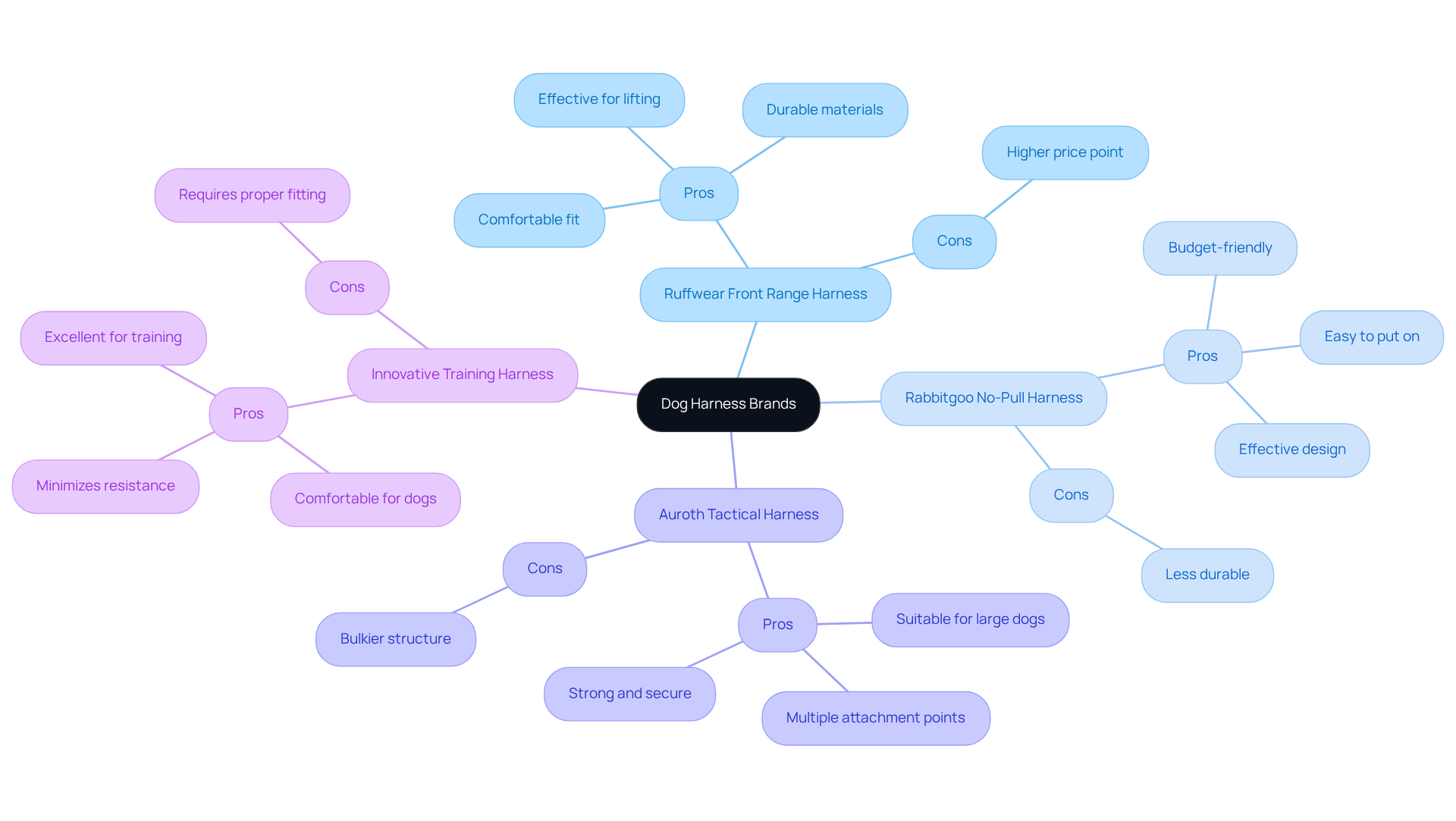
Key Considerations for Choosing the Right Harness
When selecting the right harness for your furry family member who pulls, several key considerations should be taken into account:
-
Fit and Comfort: A properly fitted device is crucial for preventing discomfort and ensuring safety. Measure your dog’s girth and neck to find the right size. A properly sized restraint should permit two fingers to lie flat between your dog’s body and the straps. Look for adjustable straps to customize the fit.
-
Type of Attachment: Consider whether a front-clip, back-clip, or dual-clip option is best suited for your dog’s behavior. According to Dr. Melody Conklin, a dog harness for pulling is typically more effective for canines that pull, as it redirects their focus towards you. Back-clip restraints may be more suitable for more tranquil canines.
-
Material and Durability: Select an apparatus crafted from premium, resilient materials that can endure wear and tear, particularly for active dogs. Breathable fabrics can also enhance comfort during walks, ensuring a pleasant experience for both of you.
-
Ease of Use: Look for devices that are simple to put on and take off. Step-in designs or those with quick-release buckles can save time and hassle, allowing for more enjoyable outings.
-
Safety Features: Ensure the safety gear has reflective elements for visibility during nighttime walks and secure attachment points to prevent escape. This is particularly important for ensuring your dog’s safety in low-light conditions.
By considering these factors, you can select a dog harness for pulling that fits well and enhances your walking experience, making outings more enjoyable for both you and your beloved pet.
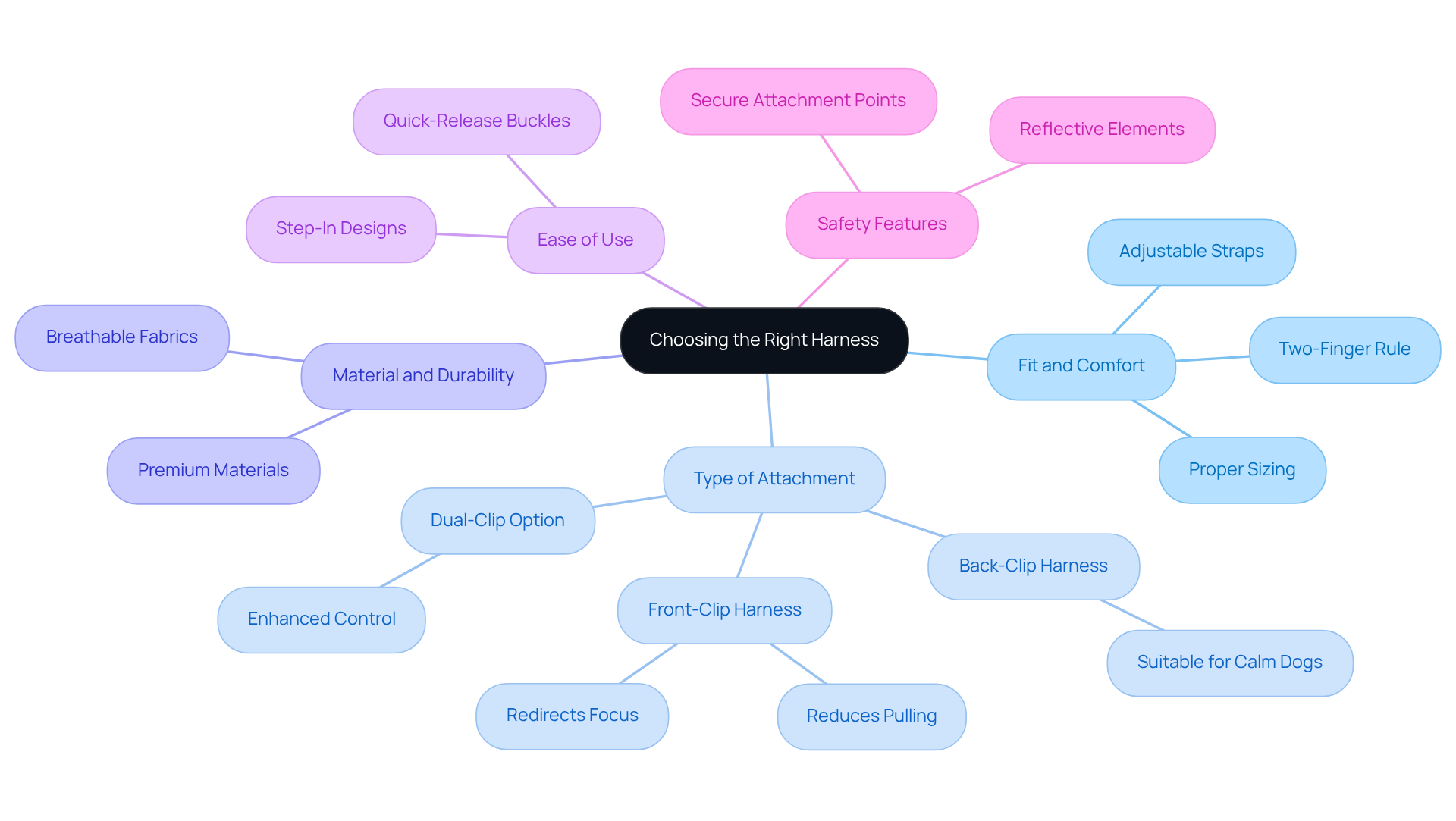
Conclusion
Selecting the ideal dog harness for pulling is essential for ensuring both comfort and safety during walks with your furry family member. A well-chosen harness not only provides better control over your dog’s movements but also helps prevent potential injuries that can arise from traditional collars. By understanding the various types of harnesses available, pet owners can make informed choices that cater to their dogs’ specific needs and behaviors, ultimately enhancing the walking experience for both you and your beloved pet.
This article delves into key aspects of dog harnesses, comparing leading brands such as Ruffwear, Rabbitgoo, and Auroth, each offering unique benefits tailored to different dog sizes and pulling behaviors. Important considerations such as:
- Fit
- Type of attachment
- Material durability
- Ease of use
- Safety features
are highlighted, emphasizing the significance of selecting the right harness for your cherished companion. The insights provided by professionals further reinforce the importance of choosing a harness that minimizes pulling while fostering a positive walking experience.
In conclusion, investing time in understanding the options and features of dog harnesses is crucial for any pet owner. By prioritizing the comfort and safety of your dog, you can transform walks into enjoyable adventures. As the market for dog harnesses continues to grow, staying informed about the best products available will ensure that your furry companion receives the best care possible. Make the choice today to enhance your dog’s walking experience and strengthen the bond you share.
Frequently Asked Questions
What is the purpose of a dog harness for pulling?
A dog harness for pulling provides enhanced control over a dog’s movement and minimizes strain on their neck and throat, promoting comfort and safety.
How does a harness differ from a traditional collar?
Unlike traditional collars, which can cause injuries when a dog pulls, harnesses distribute pressure evenly across the dog’s chest and back, reducing the risk of injury.
What are the different types of dog harnesses available?
The different types of dog harnesses include front-clip, back-clip, and dual-clip models, each designed for specific needs.
How does a front-clip harness work?
A front-clip harness effectively redirects a dog’s forward motion, making it more challenging for them to pull.
When is a back-clip harness appropriate to use?
A back-clip harness is suitable for dogs that do not exhibit excessive pulling.
Why do veterinarians recommend using harnesses?
Veterinarians recommend harnesses to prevent injuries and enhance the walking experience for both the dog and the owner.
What should pet owners consider when choosing a harness?
Pet owners should consider their dog’s unique requirements and the type of harness that best suits their dog’s behavior and pulling tendencies.

